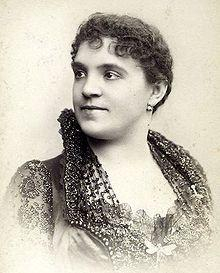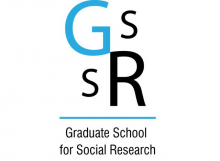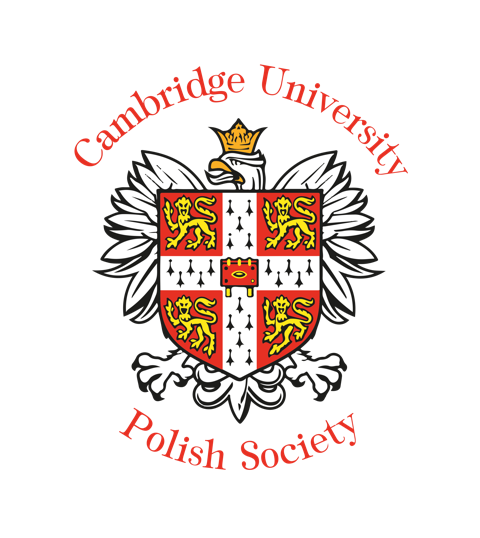Marcelina Sembrich-Kochańska
The first Polish opera superstar

Marcella Sembrich, photographed in the 1880s
Marcella Sembrich was a pianist, violinist, teacher, Polish patriot and benefactor, and the first mega star of Metropolitan Opera. She was beloved by international audience, a dear friend of Ignacy J. Paderewski, Helena Modrzejewska, Józef Hofmann and Henryk Sienkiewicz.
She was born as Marcelina Kochanska 15 February, 1858 at Wiśniewczyk, in Galicia – the part of Poland under Austrian rule. Sembrich was her mother’s maiden name, and she later assumed it as more convenient for an international career. Music played the first fiddle in Marcella’s early childhood: as a four year old she is believed to have been able to play the piano, and then two years after she could perform amateur violin concerts. Marcelina’s first teacher was her father, a travelling musician who saw enormous talent behind the cute eyes of his lovely, young daughter. But this was at the time she had to face the real problems of poverty that touched her family. Later in her life Marcelina reminisced that when parents couldn’t afford to buy her the notes, she was transcribing the whole ballads sitting up till late at night, by candlelight. The girl’s musical gift for violin, piano and singing were so enormous, that in spite of their poverty the family decided to do everything in their power to develop her talent.

Sembrich in the role of Rosina
At the age of 11, Marcelina started to study music at the Lviv Conservatory where she was receiving piano lessons from Wilhelm Stengel – her future husband. She continued musical education in Vienna where she decided to concentrate on her singing skills rather than perfect her violin and piano performance. Marcelina made her opera debut during her visit in Athens in 1877 as Elvira in "The Puritans" by Vincenzo Bellini. A year later she signed a contract with the Dresden Court Opera and by then decided to adopt her mother’s maiden name as her stage name. She always preferred to be called Marcella rather than Marcelina and hence her stage name Marcella Sembrich. Due to her proper early training, a 19-year-old singer was learning many parts in a foreign language in a surprisingly short time. Marcella began to perform at London’s Covent Garden Opera and entertain audiences in Madrid, Paris and Warsaw. After her performance for the Tsar in Saint Petersburg, his Majesty was so touched with her talent that he offered her a golden bracelet with diamonds.
In 1883, Marcella Sembrich went to the United States to sing in the newly founded Metropolitan Opera company, where she performed 487 times and sang regularly from 1898 to 1909. At the top of her career, the 1905–06 season, she was paid $1,000 for each of 45 performances. American audience felt in love with her flute-like voice that ranged of 2.5 octaves. The Singer collaborated with personalities such as Enrico Caruso, Mattia Battistini, Adam Didur, Jan and Edward Reszke – the greatest names of that time opera.
Owing to her talent, the frequency of her performances and artists with whom she collaborated, Sembrich was greeted with a huge respect by the critics. Eduard Hanslick, the man who influenced the aesthetic consciousness of 19th century music, appreciated Marcella’s oeuvre and wrote adulatory review after her performance. Marcella’s voice was regarded one of the greatest of the time.

Marcella Sembrich in 1917
When Sembrich became a widow in 1917, she ended her stage career and decided to teach music. Marcella taught students from the Curtis Institute in Philadelphia and at the Julliard School of Music in New York, and some of her students came to be outstanding vocal teachers. Despite being one of the most successful opera singer of all times, there are many other reasons to treat her as a role model. She never forgot about her humble background. There are many accounts of her kindness, even for the street musicians. Marcella also made it her mission to promote Polish art as much as possible, she was always trying to include pieces by a Polish composer in her repertoire and always sang them in her own language. Whenever appeared on a Polish stage, her visits were celebrated like the National Day. She became one of most venerated faces of Polish pride. In 1914 the singer headed the American-Polish Relief Committee in New York and was active in helping the victims of the war in Poland, working with Henryk Sienkiewicz and Ignacy Paderewski. The Committee also disseminated material on the history and culture of Poland, propagating the idea of regaining independence.
Marcella Sembrich, pure pearl of worldwide stage and fully devoted patriot, died on January 11, 1935 at her home in New York City.
Bibliography:
-
„MARCELINA SEMBRICH-KOCHAŃSKA – najsłynniejsza śpiewaczka polska”, [Internet] Available from: http://maestro.net.pl/document/ksiazki/Sembrich.pdf [Accessed 27 October 2017].
-
Anna Leszkowska, 2014, „Marcella Sembrich-Kochańska – drugie życie artystki” , [Internet] Available from: http://polskiemedia.org/marcella-sembrich-kochanska-drugie-zycie-artystki/ [Accessed 27 October 2017].
-
Dave Lewis, Marcella Sembrich-Kochańska - Artist Biography, [Internet] Available from: https://www.allmusic.com/artist/marcella-sembrich-mn0001662923/biography http://culture.pl/en/article/marcella-sembrich-polands-first-opera-superstar
-
Małgorzata Komorowska, 2017, "Marcella Sembrich-Kochańska. Artystka świata”, [Internet] Available from: http://dzieje.pl/ksiazki/marcella-sembrich-kochanska-artystka-swiata-0 [Accessed 27 October 2017].
-
The Editors of Encyclopedia Britannica, Prakseda Marcelina Kochańska, [Internet] Available from: https://www.britannica.com/biography/Marcella-Sembrich [Accessed 27 October 2017].
If you want to read more:














